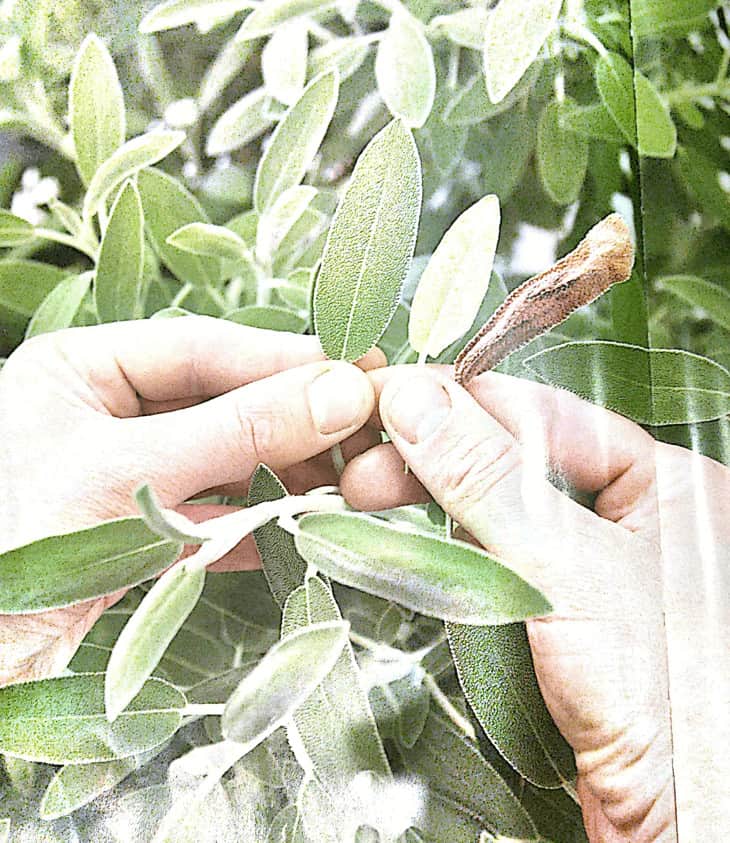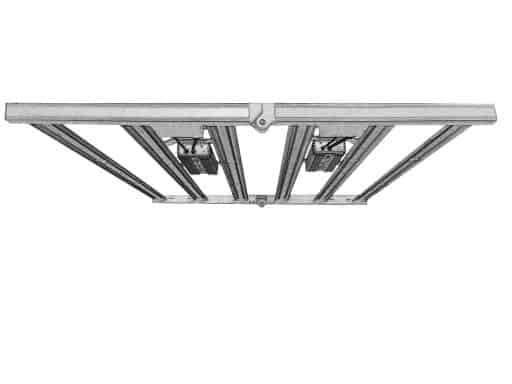We learned how to diagnose plant diseases.
Plant Nutrient Deficiency
There are generally only photos of the disease on the leaves. Therefore, it is difficult for growers to accurately determine the cause of the disease, which ultimately leads to overcorrection or failure to prescribe the right medicine. Factors such as the pH of the nutrient solution and the pH of the substrate, the environment of the plant, the age of the seedlings, and pathogens can all cause the problem of nutrient imbalance. Sometimes, certain diseases have nothing to do with nutrient levels. Therefore, when diagnosing diseases, we also need to pay attention to the following points.
- Do all plants of this variety show similar symptoms?
- Is the pH of the nutrient solution within a suitable range for crop growth? Is it too acidic (less than 5.0) or too alkaline (above 6.5)?
- Is the pH of the nutrient solution within a suitable range for crop growth? Is it too acidic (less than 5.0) or too alkaline (above 6.5)?
- Is the temperature in the range suitable for crop growth?
- Is the water temperature within a suitable range for crop growth (not lower than 13°C, nor higher than 30°C)?
- Does the canopy have good ventilation?
- Are there pests?
- Is the light intensity in the range suitable for crop growth?
- Is the nutrient solution used a special nutrient solution for soilless culture?
- If there is no problem with the above indicators, then the problem may come from nutrient imbalance. Generally speaking, the best solution is to reformulate the nutrient solution.
If there is no problem with the above indicators, then the problem may come from nutrient imbalance. Generally speaking, the best solution is to reformulate the nutrient solution.
Yellowing and Necrosis
There is a kind of green pigment in plants, which is generally called chlorophyll. When chlorophyll is lacking, plant leaves will turn yellow. There are many causes of yellowing, such as nutrient deficiency and pests. After the leaf yellowing continues for a period of time, the plant tissues will become necrotic. Necrosis refers to the death of plant tissues.
Young Leaves Yellowing
When plants lack iron and other trace elements, their young leaves will turn yellow. Most fertilizers for hydroponics contain sufficient iron. However, if the pH of the nutrient solution is too high, the iron will become a form that is difficult for plants to use, resulting in iron deficiency in plants. Some plants cannot absorb iron efficiently. Basil is one of them. Once the pH of the nutrient solution is higher than 6, basil will produce iron-deficiency yellowing, and this yellowing is irreversible. Adjusting the pH of the camp can increase the effectiveness of iron, thereby avoiding the yellowing of young leaves.
Yellowing of Old Leaves
- Nitrogen deficiency. Nitrogen is one of the important components of chlorophyll. When there is a lack of nitrogen, plants will transport the nitrogen in chlorophyll to the parts that need it. When the low nitrogen stress is felt, the nitrogen in the old leaves will be transported to the new tissues. In addition, when the EC value of the nutrient solution is low, the nitrogen in the old leaves will be transported to the new tissues. In addition, when the EC value of the nutrient solution is low, plants are also prone to nitrogen deficiency. Some novice growers may encounter the problem of nitrogen deficiency when hydroponics vegetables.
- Natural senescence. When reaching a certain leafage, the leaves begin to senescence. When observing older plants, we often find that the lower leaves are mostly senescent leaves. In soilless gardens, vegetables have both new and old leaves, and the yellowing caused by natural senescence usually only appears on the old leaves.
- Magnesium deficiency. Magnesium deficiency or nitrogen deficiency can cause leaf yellowing. The symptoms of the two are similar, but there are some differences. Plants lacking magnesium will not only yellow the leaves, but also part of the leaf margins, or leaves will become necrotic. Adding MgSO4·7H2O to the nutrient solution (1-2 teaspoons of fertilizer per 10L of water) can increase the concentration of magnesium in the nutrient solution, thereby effectively solving the problem of magnesium deficiency in plants.
Dry Heartburn
Calcium is an important component of plant cell walls. When plants are deficient in calcium, symptoms of dry heartburn often occur. In an environment with strong sunlight and high temperature, plants grow rapidly. Therefore, when the calcium absorbed by the plant cannot meet its strong growth needs, it will cause dry heartburn. Of course, there are many ways to avoid dry heartburn.
- Choose different vegetable varieties. Some varieties are prone to dry heartburn, and some varieties are not prone to dry heartburn.
- Increase the air circulation in the greenhouse, and promote the absorption of calcium by plants by increasing the transpiration rate.
- Apply low-nitrogen fertilizers to reduce the growth rate of plants.
- Partially shading or full shading treatment of vegetables can reduce the growth rate of vegetables.
- Increase the calcium concentration in the nutrient solution, but this method is sometimes effective, sometimes ineffective.
(Dry heartburn is caused by calcium deficiency. In the early stage of the disease, the top edge of the leaf is turned outwards, the edge of the leaf gradually becomes dry and yellow, the disease spot expands, the leaf tissue is water-stained, and the upper part of the leaf gradually becomes dry and yellow, and finally turns black. The mesophyll is in the form of dry paper-Luis Note)
Pest Problem
Algae
Algae itself is harmless, but it can cause other problems. First of all, algae will compete with plants for nutrients. Of course, this is only a small problem, but they will bring about a bigger problem: when algae exist, it is easy to breed a lot of fungus gnats and shore flies. Reducing the exposure time of the nutrient solution can effectively reduce the growth of algae. When overwatering, algae often appear on the surface of the plant, but they are not harmful to the plant.
Fungus Gnats and Shore Flies
Fungus gnats feed on fungi, algae and plant residues. Its adults are usually harmless, while its larvae feed on plant roots. After eating, they produce wounds. Pythium and knives can easily infect plants through these wounds. The water fly resembles the fungus mosquito, but its larvae are harmless to plant roots. In addition to being a bit annoying, water flies do not cause any harm. Fungus gnats resemble mosquitoes with longer legs, while shore flies are more like fruit flies. Now, there are many ways to effectively prevent fungus gnats and shore flies.
- Remove algae and plant residues in the planting area in time.
- Introduce entomopathogenic nematodes (pathogenic nematodes can kill insects through life).
- Use pesticides containing Bacillus thuringiensis (Bt).
- Use organic pesticides containing azadirachtin.
- Use organic pesticides containing pyrethrins.
Aphid
Although aphids will not directly kill plants, they can also adversely affect the growth of plants, and
Aphids can also spread viruses. When aphids move, they leave sticky honeydew on the leaves. These honeydews do not
It only attracts ants, but also some fungi. In production, growers can use insecticidal soap, pesticides containing azadirachtin or pyrethrin to control aphids.
Thrips
Plants damaged by thrips will have a variety of sequelae, such as leaf spots, deformed flowers, and deformed leaves. Thrips are difficult to control and can be found on almost all crops. The introduction of natural enemies such as lacewings, carnivorous mites, parasitic wasps, flower bugs can effectively curb thrips, and the organic pesticide spinosad can also deal with thrips. In addition, insecticidal soap, organic pesticides containing azadirachtin or pyrethrin can also play a certain role in the prevention and treatment of thrips.
Red Spider (also called Spider Mite)
The most common red plant (Tetranychus mites) in vegetable gardens is Tetranychus urticae, which damages crops such as tomatoes, eggplants, cucumbers and strawberries. In the early stage of its damage, dark spots will appear on the upper surface of the leaves, and as the damage deepens, the leaves will yellow or even fall off. When the disease is severe, a webbing webbing can also be found on the surface of the leaf. Dry conditions and excessive fertilization tend to attract red spiders, and red spiders like to gather on the leaves at the top of the plant. The introduction of natural enemies is an important method to control red spiders. Commonly used natural enemies are Chilean phytoseiman and pseudo-blunt suiman. In addition, insecticidal soap and neem oil can also effectively control red spiders. When the two pesticides are used alternately, the best interval is 5-7 days. Pesticides are difficult to kill red spider eggs. Therefore, if you want to effectively control red spiders, you need to take the medicine every once in a while.
(Red plants mainly damage the leaves, stems, flowers, etc. of plants. They suck the stems and leaves of plants to reduce water in the affected parts, showing chlorosis and whitening, and the surface of the leaves shows dense white spots, curling and yellowing. In severe cases, the plant Yellow leaves, burnt leaves, curling leaves, falling leaves and death occur. One by one Luis Note)
Under high temperature conditions, spinach germination rate is low
Basil showed signs of lengthening under low light conditions. Although the seedlings in the picture can barely be used, they are on the verge of being abandoned. The stalks of the seedlings grown under low light are slender and easy to fall down.
Nursery Problem
For novice planters, raising a batch of seedlings is no easy task. There are many reasons for the low seedling rate, dead seedlings and weak seedlings.
- When the substrate is too wet, it is easy to rot the seedlings (this kind of problem is prone to occur when the coconut bran or clay with smaller particles is used as the seedling substrate).
- The matrix is too dry.
- Under low light conditions, the seedlings grow slenderly, which can easily cause falling back.
- The germination rate of some seeds is inherently low.
- Some seeds are susceptible to environmental temperature.
Wilting
In daily management of vegetable gardens, it is often difficult for growers to control the amount of watering. Therefore, excessive watering often occurs. Wetting between dry and wet is more beneficial to the growth of plant roots. In fact, there are many methods to help growers determine the amount of watering. Generally, finger detection method, weight estimation method and hygrometer method are commonly used. The finger detection method is the easiest method. Use your fingers to detect and feel the humidity of the substrate. However, when the cutting pot is large, this method cannot be used. Because the length of human fingers is limited, the bottom of the pelvis cannot be detected, which leads to sometimes The surface matrix is completely dry, while the bottom matrix is still very moist. The weight estimation method can also roughly determine the water content of the substrate. If the basin is light, it should be watered. In addition, commercially available hygrometers can also detect the substrate humidity, but in general, the first two methods are sufficient.
Rotten Roots
The root system decays after death and eventually turns brown. There are many reasons for rotten roots.
- Low oxygen content in the root zone, excessive watering, poor substrate ventilation, and high water temperature.
- The conductivity of the nutrient solution is too high or the nutrient is deficient.
- The pH of the nutrient solution is too high or too low.
- The water temperature of the nutrient solution is higher than 32°C.
- The detergent is not completely removed during cleaning, which will eventually cause poison to plants.
- There are pathogens that cause root rot.
Clean the hydroponic system frequently, clean up plants with rotten roots in time, and kill pathogens. Before supplementing the seedlings, make sure that the environmental conditions have reached the standard. In the nutrient liquid film cultivation system, increasing the flow rate of the nutrient solution can avoid root rot. In the floating plate cultivation system, increasing air circulation can avoid root rot. In addition, building the liquid storage tank underground can also reduce the water temperature, and it can also be equipped with a cooling system to reduce the temperature of the nutrient solution. Both methods can be used. Effectively reduce rotten roots caused by high temperature.


